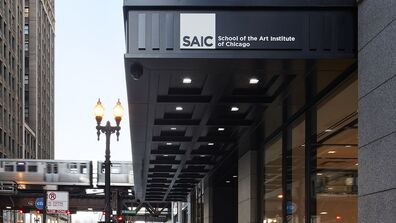
From the President

One of the most vital and productive ideas of the School of the Art Institute of Chicago (SAIC) is the concept of the “citizen artist.” Citizen artists do not possess a particular nationality; citizen artists are aware of our interconnectedness as people and our shared responsibility to do good. Citizen artists recognize that their work in the studio and the classroom is not separate from the culture we live in, the politics we negotiate, and the society we build together. This issue of the School of the Art Institute of Chicago magazine tells the stories of our School’s artists, designers, and scholars who embody the role of the citizen artist.
Our cover story highlights alum Tania Bruguera (MFA 2001, HON 2016). In her work, she engages with the people of her homeland Cuba and with immigrants and passersby on the streets of New York City, using art to transform them into engaged citizens. While she has been detained and released by Cuban authorities for attempting to stage a work offering participants one minute of free speech, she remains positive and hopeful that if we overcome our fear and apathy, we have the power to build a better world.
The effect that art can have with an audience and in society is further explored through the concept of empathy. In an article exploring the concept, Executive Director of Counseling, Health, and Disability Services Joe Behen posits that artists have a greater capacity for empathy. Through a historical overview and further expert testimonial, the article suggests that helping us care for one another is an essential aspect of artists’ contribution to society. The analysis includes several individual art practices, including those of faculty members Jesse Ball, Kevin Kaempf, and Riva Lehrer (SAIC 1993–95).
The citizenship of SAIC artists can also be seen in the actions they take as well as the art they make. SAIC artists, designers, and scholars have founded arts, educational, cultural, and charitable organizations; brought unique wisdom to civic and governmental bodies; created the aesthetic of protest movements; brought art objects into the public square; and expanded the idea of what we think of as art to include projects made with community members’ participation. A series of profiles on a diverse set of projects—from establishing art education programs in the late 19th century through contemporary, socially based engagements—illustrate five examples of SAIC artists’ contributions to Chicago.
The works explored in this issue of the magazine are just some of the ways our alumni, students, faculty, and staff enact their role as citizen artists. Whether you are an artist, designer, scholar, educator, or something else entirely, I hope these stories inspire you to become a more engaged citizen with your own contribution to make.
Follow President Tenny on Instagram at instagram.com/saicpres.
